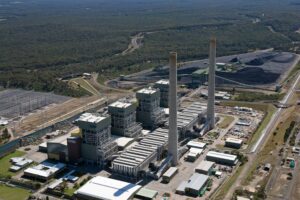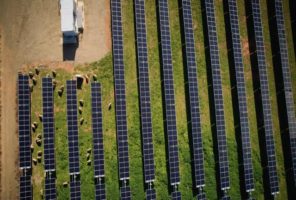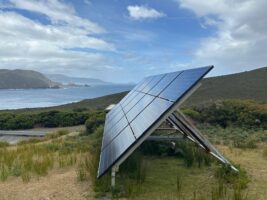Researchers from the Australian National University warn that the melting of the Antarctic ice-cap may drive rapid sea-level rise, and is being accelerated as a result of human-induced climate change.
The findings are detailed in the journal Nature Communications, with scientists from the ANU using new data to determine how the loss of ice from Antarctica, prior to human civilisations, has preceded substantial loss of ice from Greenland, and extreme rises in global sea-levels.
The ANU researchers find that human-caused global warming is of grave concern, as historical ice-loss from the Antarctic and Greenland ice-sheets that lead to substantial sea-level rise were caused by factors much weaker than the impacts of the human-caused global warming observed today.
“These were smaller and slower than the human-caused climate disturbance of today,” the ANU’s professor Eelco Rohling says.
“Our study shows clearly that Antarctica, long thought a sleeping giant when it comes to sea-level rises, is in fact the key player.”
“And it appears that it can change by large amounts on timescales that are highly relevant to society and in ways that would have profound effects on human infrastructure.”
Researchers studied new data collected for the last ‘interglacial’ period, which occurred around 125,000 years ago when sea levels rose up to 10 metres above current levels.
During this period, known as the Eemian interglacial period, global temperatures were 1 to 2 degrees warmer than they were today, and carbon dioxide concentrations were below current levels, reaching 280 parts per million.
The study was able to estimate how much ice was first lost from Antarctica during the last interglacial period, followed by a loss of ice from the Greenland ice shelf. Scientists have estimated that global sea-levels rose at a rate of 3 metres per century during the last interglacial period.
The last major Antarctic melt was driven by warming in the Southern Ocean, and the subsequent changes to global climate systems lead to warming in the Northern hemisphere and to the loss of ice in Greenland.
In fact, by comparing the current rates of sea-level rise and ice melt to those of earlier period of the last period of significant sea-level rise, the researchers found that it is likely that the current period of human-induced global warming may lead to substantially faster sea-level rise than has occurred previously.
The researchers found that increased rates of sea-level rise may be triggered by the ‘activation’ of processes that accelerate ice-loss beyond normal processes, including ice-shelf hydrofracturing and ice-cliff collapse that cause ice sheets to become unstable.
“These processes remain debated, but the apparent reality of such extreme rates in pre-anthropogenic times —when climate forcing was slower, weaker, and more hemispherically asynchronous than today—increases the likelihood that such poorly understood mechanisms may be activated under anthropogenic global warming, to yield extreme sea-level rise,” the research paper says.
Co-lead author of the study, Dr Fiona Hibbert, said that the research shows the extent of what may be repeated due to human-induced global warming, particularly during a period when both polar regions are being warmed simultaneously.
“This drives simultaneous ice-loss in Antarctica and Greenland,” Dr Hibbert said.
“But, what’s vital to remember is that today’s climatic disturbance is greater and develops faster than that of the last interglacial.”
“As a result, rates of sea-level rise may develop over the next several centuries that are even higher than those found for the interglacial we have studied.”
Its a finding that will have dramatic implications for many of the world’s major cities and costal communities, with recent forecasts of climate change induced sea-level rise leading to the displacement of almost 200 million people.










